For the last week I’ve been enjoying warm snow-free days on Kiawah Island, a vacation spot off the coast of South Carolina. One of the joys of being here (apart from the weather, of course) is seeing plants I can’t identify. This isn’t because they are rare, it’s because they are unfamiliar, and in vacation mode I can’t find the energy to look them up. Cycling around the island, with the sun warm on my shoulders, I simply enjoy what I see.
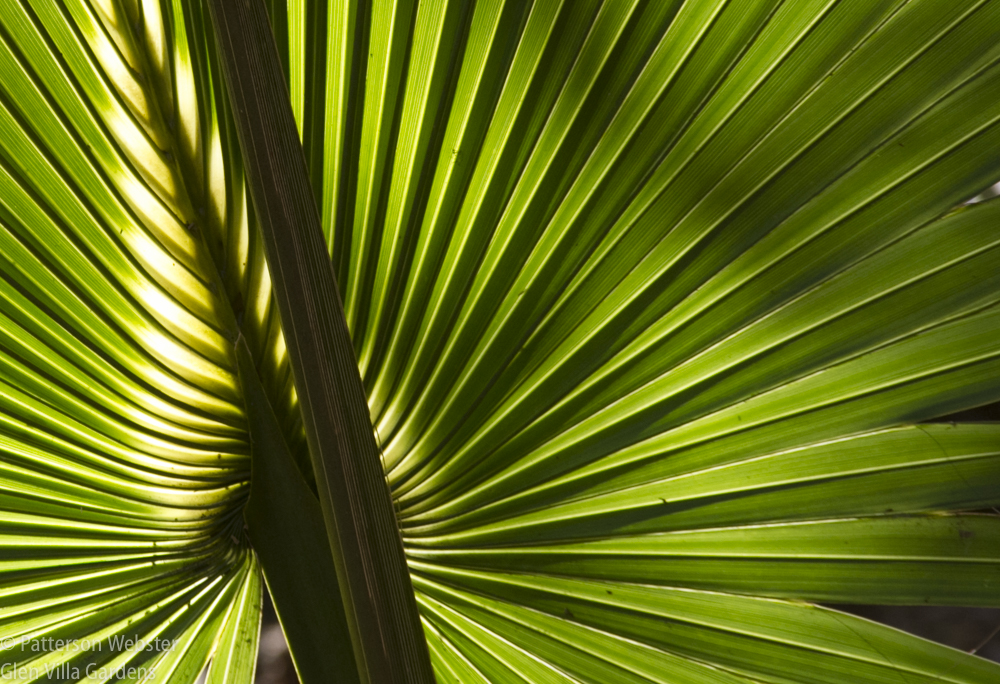
These palms have an inner glow that warms the soul. On hot days, they would work well as fans.
Sun shining through palm fronds catches my eye wherever I look, particularly towards the end of the day when the sun comes aslant.
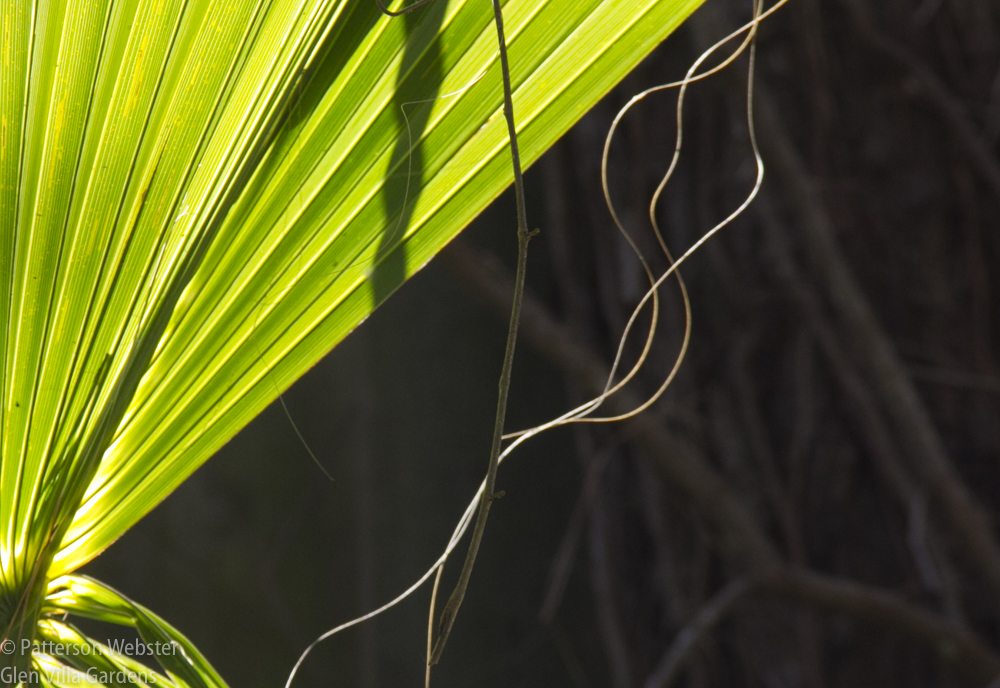
An abstract painting waiting to be conveyed onto canvas? I’m particularly taken by the wispy bit on the right.
Patterns are everywhere, whether I look straight ahead at a tree trunk …
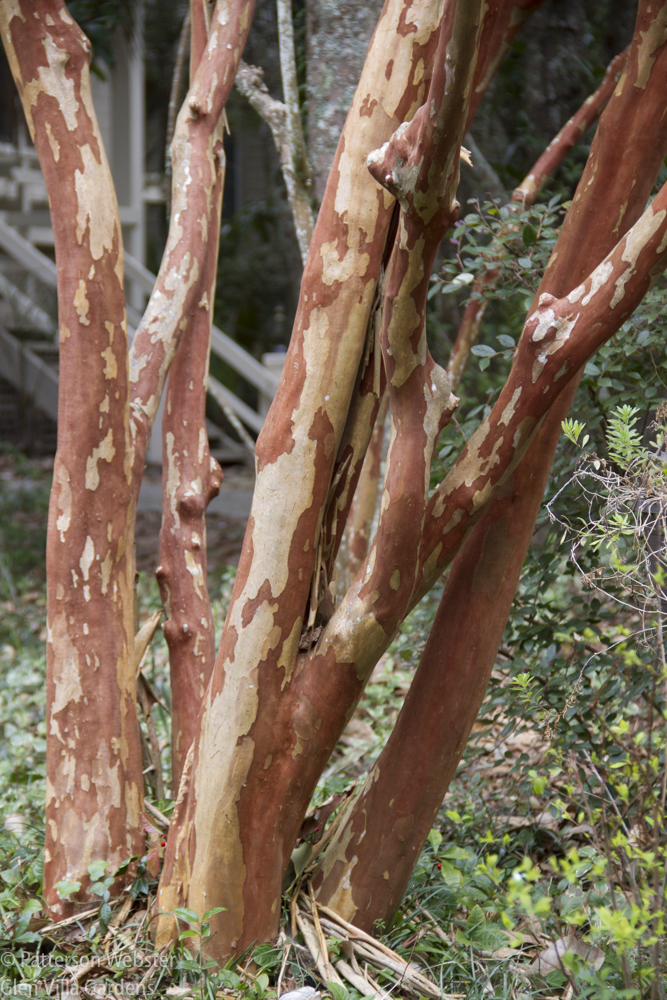
This I can identify: crepe or crape myrtle. I’ve seen it spelled both ways. Mostly though I’ve seen it butchered. Why do people chop the branches down to ugly stubs? Just because everybody else does?
or up at branches silhouetted against the sky.
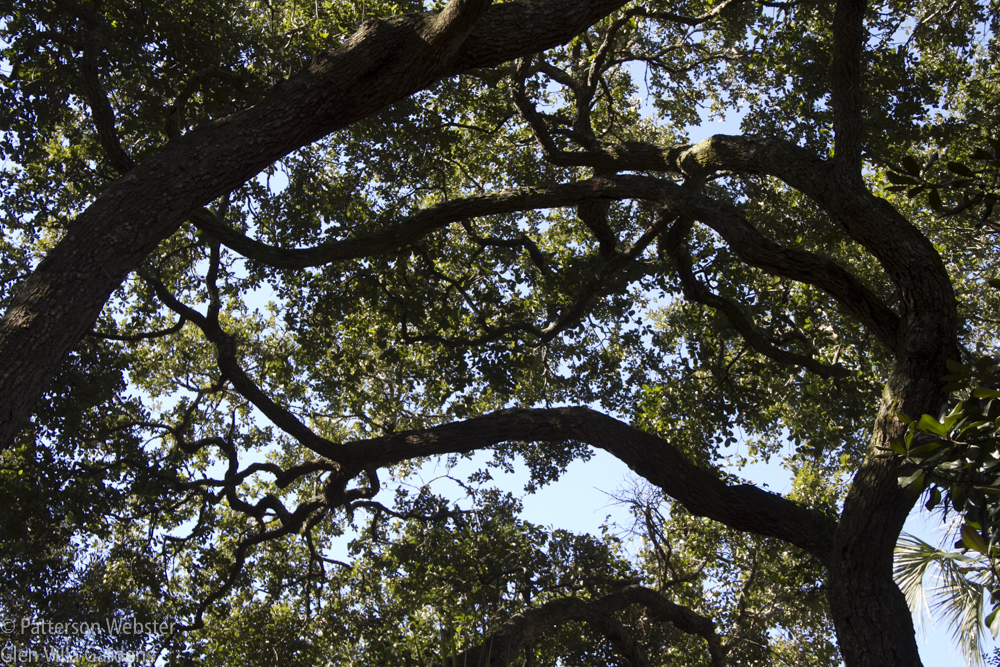
I think these twisted branches belong to a live oak. Tell me if I’m wrong.
From the top of an observation tower I looked down and marvelled at the delicacy of candles on a pine tree.
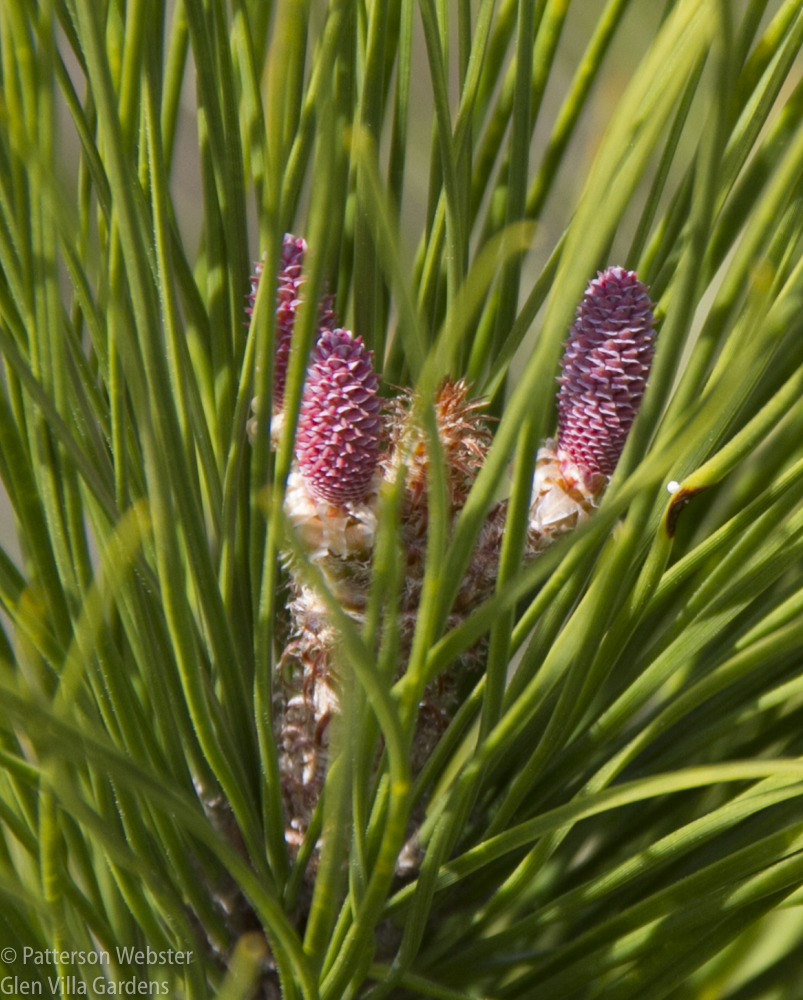
The colours here are natural. I haven’t fiddled with them at all. And aren’t they stunning?
On the same tree, what looked like tiny pine cones in formation were as purple as heather on a Scottish hillside.
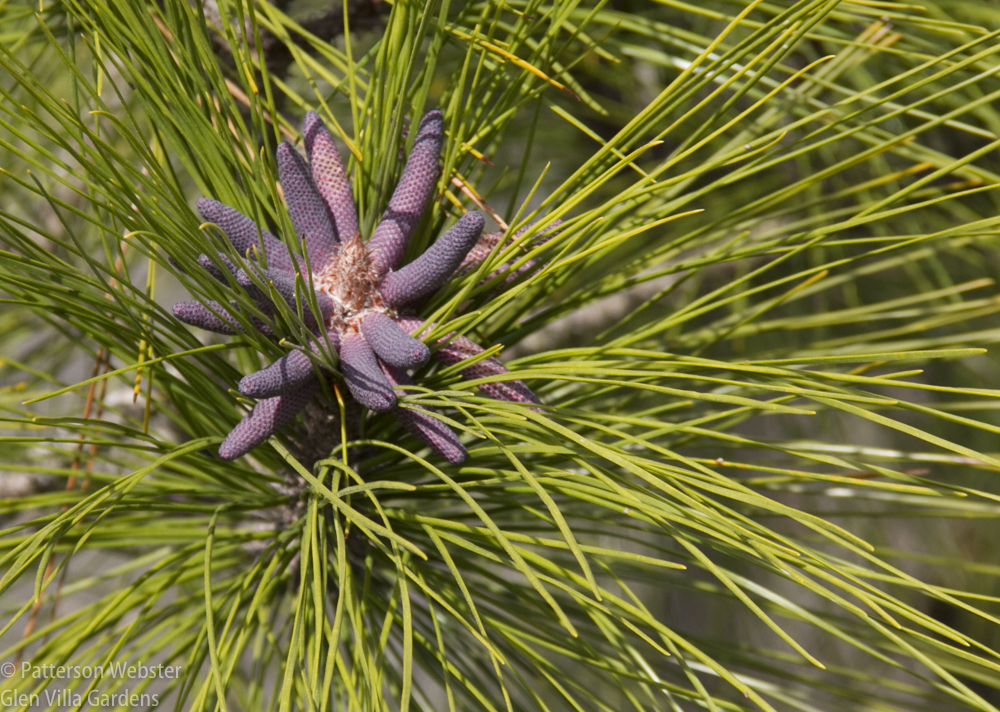
This may be a pond pine, or Pinus serotina. If so, the cones open only after a fire to release seeds, and stay on a tree for 2 to 8 years.
The bark of this tree was beautifully patterned as well.
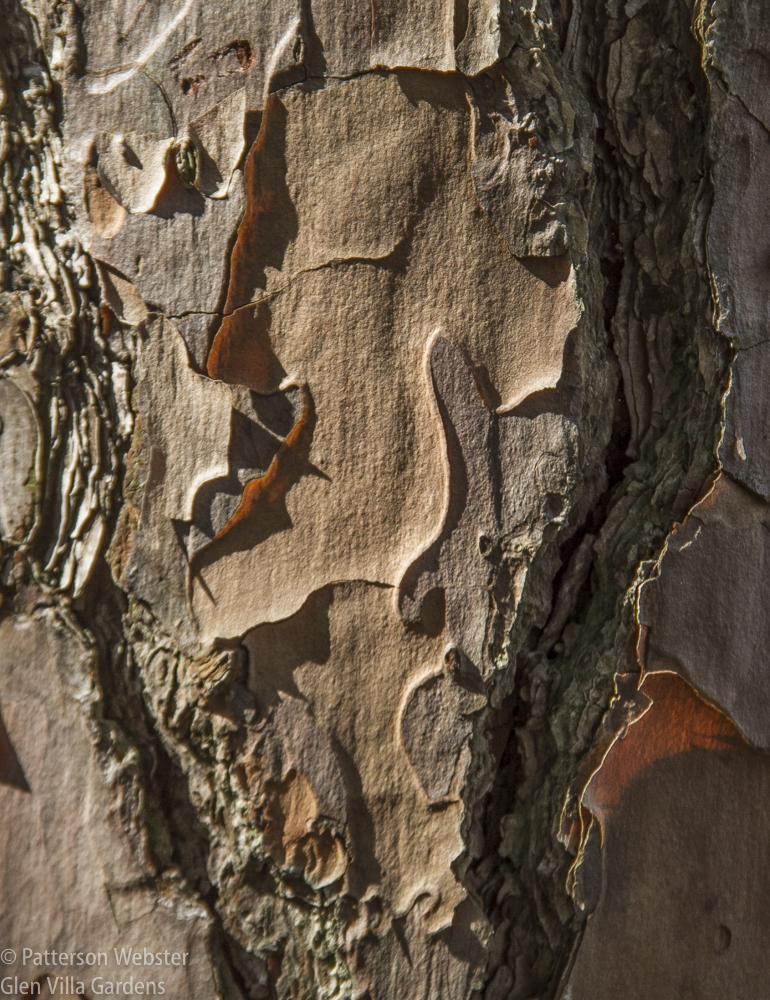
This reddish-brown scaly bark is why I think the pine is a pond pine, also called a marsh or Pocosin pine.
Trees and palms aren’t the only thing to catch my eye. Or my ears. This past week the talk here has all been political, as Republicans prepared to vote in the South Carolina primary. And it hasn’t ended — the Democratic primary takes place next weekend. In light of the political maneuverings, ordinary grasses take on a special character.
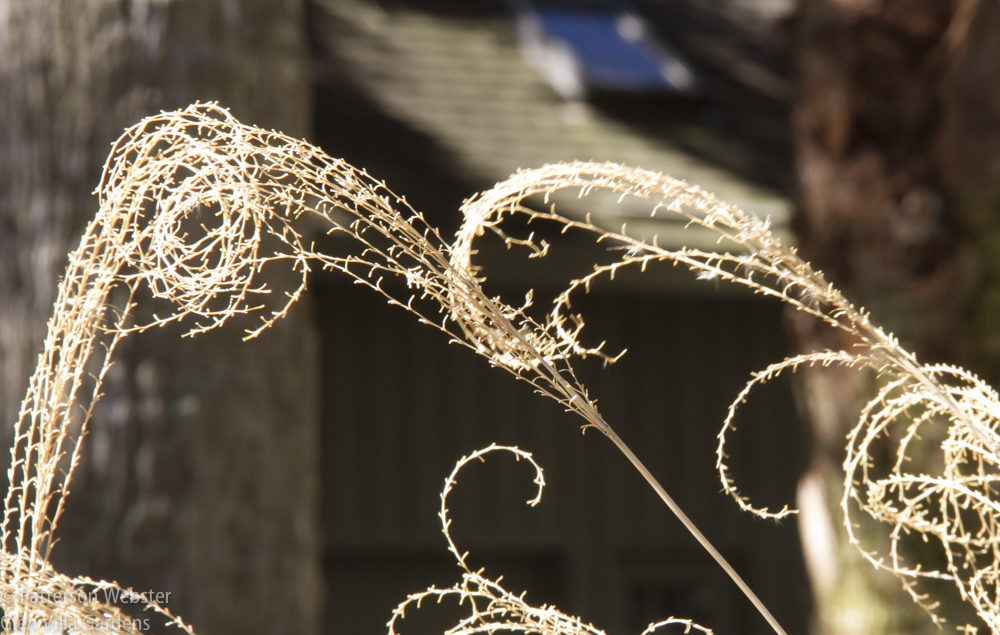
These furls remind me of emerging ferns. Or of prickly men smacking heads over some political point. There was a lot of that last week, in the lead up to the state’s Republican Primary.
With a bit of imagination, even shadows tell a story.
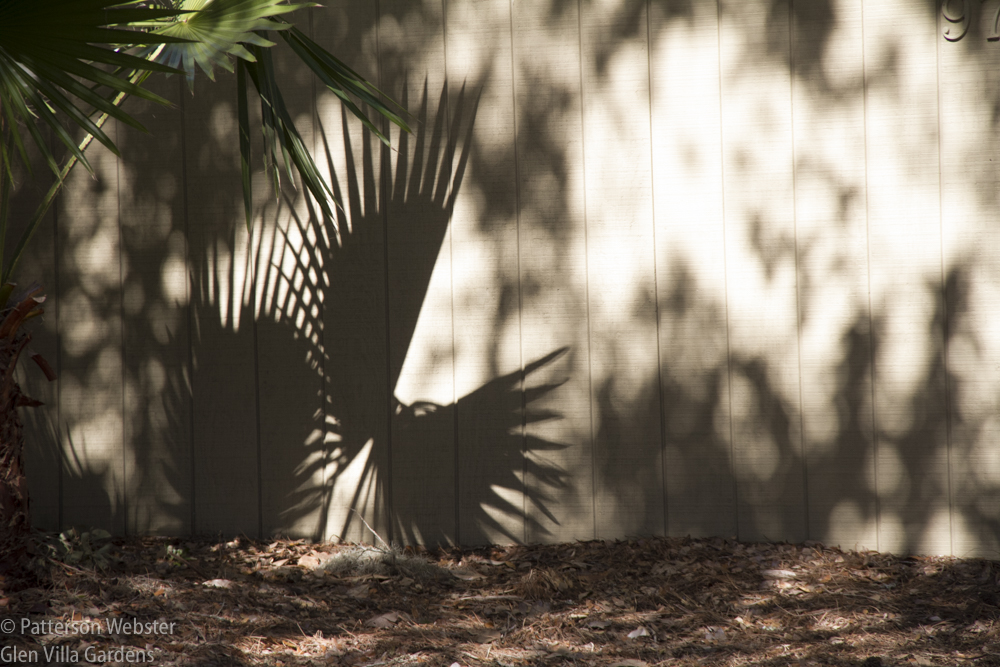
A bird fleeing the political conversation, or just the shadow of a palm? You choose.





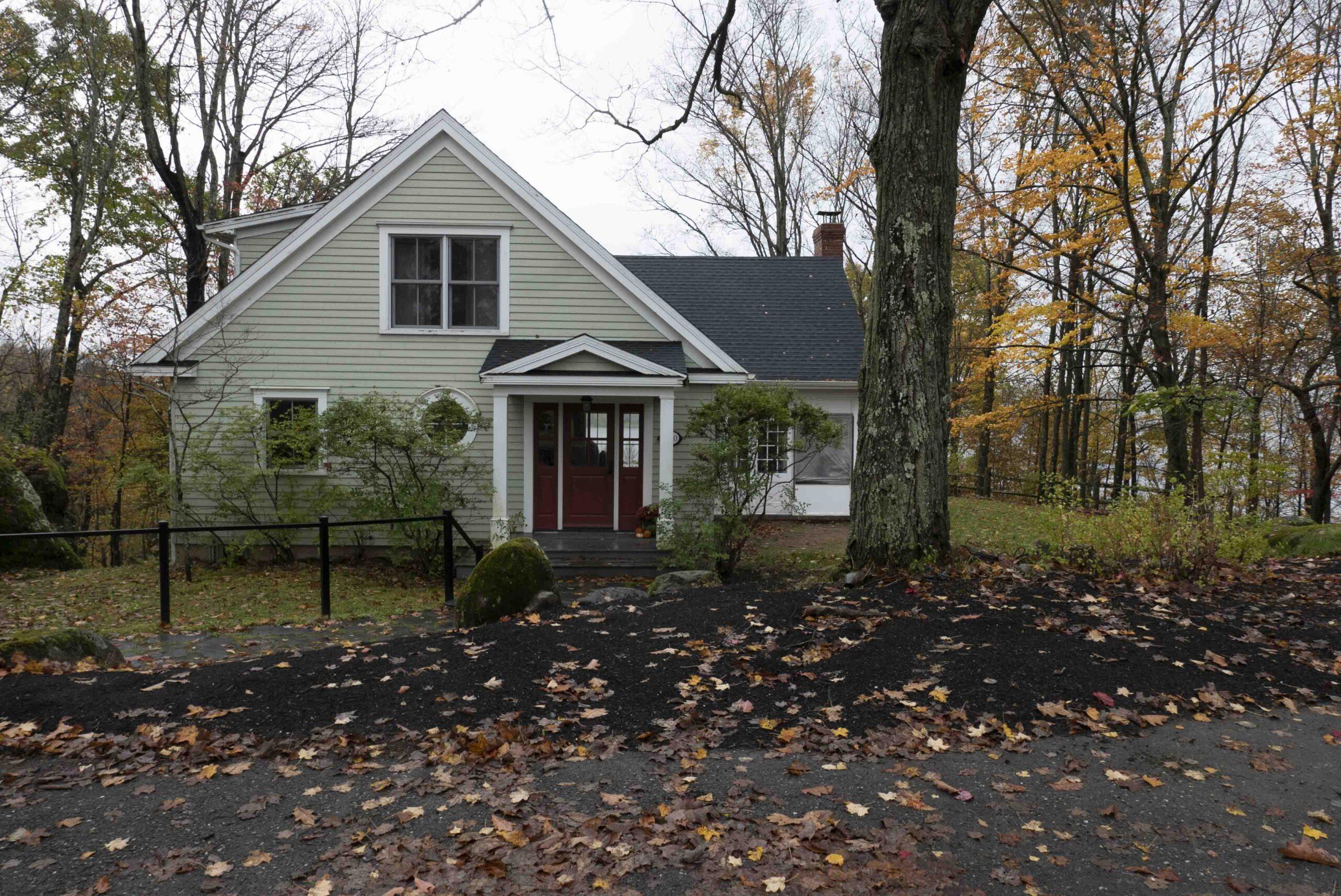
It’s always palmy weather at Neil Banera’s house.
That’s because 15 tall, graceful Chinese windmill palms stand like tropical sentries on his small front lawn in Fairfield. He and his wife, Livia Meret, have lived there 19 years — and watched 10 feet of growth in their frond-topped little forest, now up to 25 feet tall.
When they first saw the extraordinary grouping while househunting, their reaction was pretty much “wow,” Banera recalls. They would have bought the house regardless, but the mini-oasis was something of a selling point.
“They’re interesting, that’s for sure,” said Banera, sitting in his living room, where they dominate the view. “Lots of people do stop and chat.”
The Winnipeg native gets a kick out of cutting the grass around his swaying palm trees while relatives are shivering and shovelling back in Manitoba. “In the past, tour buses and horse-drawn carriages would come by. We apparently have the biggest palm-tree garden in Victoria.”
Banera, a retired engineer for the provincial government, estimates the trees are at least 45 years old. Neighbourhood lore has it that a Johnny Appleseed character with a palm fixation planted 18 palm seeds — three at a former farmhouse across the street and 15 on Banera’s property, along with others in Beacon Hill Park.
The palm’s official name is Trachycarpus fortunei in honour of Scottish plant hunter Robert Fortune, famed for smuggling tea cuttings out of China to establish tea plantations in British India in the mid-1800s. When he returned to England, it was with windmill palms for London’s Kew Garden. From there, the trees spread across Europe.
The windmill is the hardiest palm and much in demand in North America for its ability to endure cold winter nights, notes the website realpalmtrees.com. Thanks to its origins in the freezing foothills of the Himalayan Mountains, the trunks have developed a thick fibrous husk used in parts of Asia to make rope.
It’s quite the hairy overcoat up close, but it does the trick.
To keep the palms hydrated, the couple has installed an in-ground sprinkler system and adhere strictly to watering rules — an hour a week during warm months and if it’s really hot, every four days. Watering by garden hose proved too onerous, what with having to move it every hour for 15 hours.
Victoria’s cool, wet winters and even snow haven’t stunted the palms’ growth. When they were smaller, Banera used a broom to brush off any snow that accumulated on the fronds. “Now, they’re way too big.”
In fact, they’ve grown so steadily, he had to cut a little piece out of his roof to accommodate the northernmost palm. “They haven’t done anything to our sewage line yet,” Banera said.
[email protected]
– See more at: http://www.timescolonist.com/news/local/fairfield-oasis-the-biggest-palm-tree-garden-in-victoria-1.1785139#sthash.LOMEaBuj.dpuf
Great story, Robert. Thanks for sharing it.
Lovely images! I especially enjoyed the palms–both the plants and the shadows. It’s good that you’re in vacation mode and enjoying your surroundings. Have a great time!
thanks, PlantPostings. It is easy to have a good time here, and I am!
What wonderful photos. I especially love the tree bark.
The tree bark is very appealing, I agree.
A few years ago we spent a Christmas week on Edisto Island in South Carolina and really loved it. You’ve got some great photos here, I like the bark and grass photos particularly.
Thanks, Jason. We haven’t managed to get to Edisto yet but maybe this week. It’s nice and sunny here today, and warm. Finally!